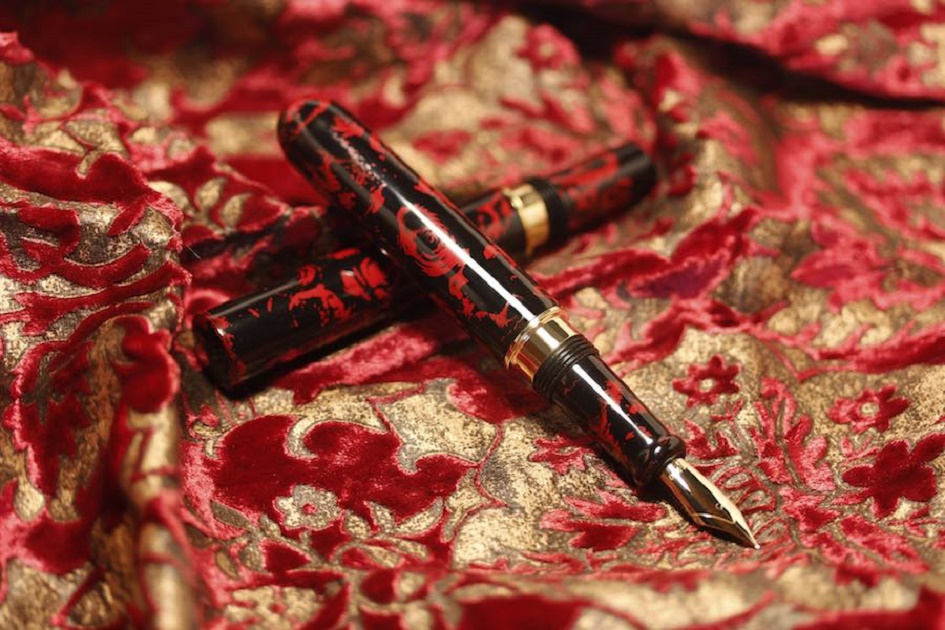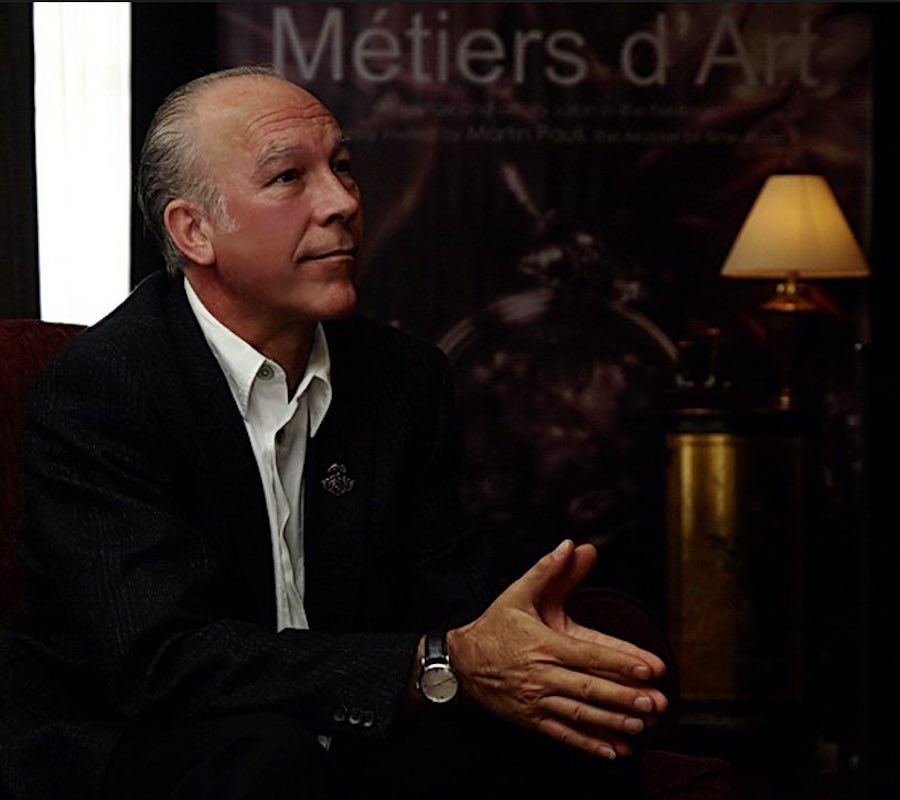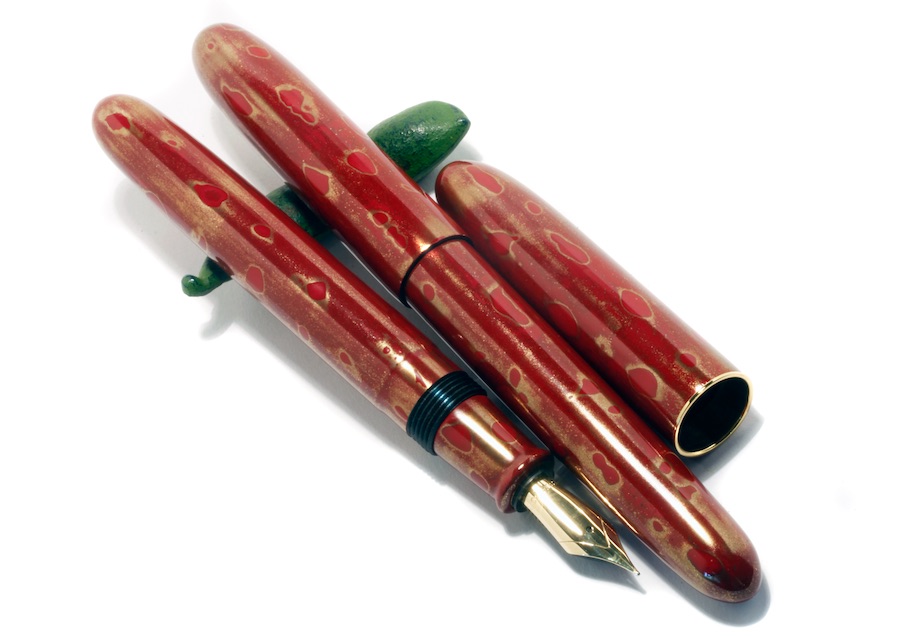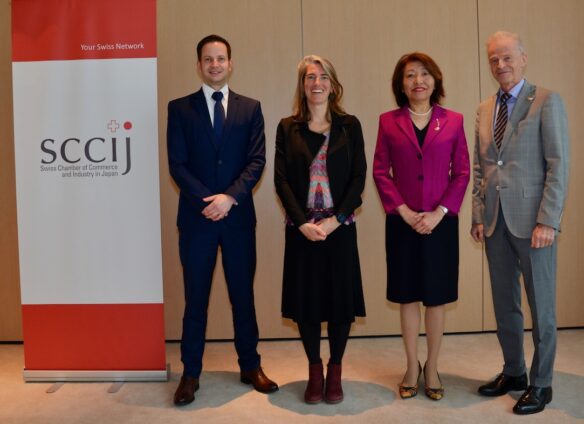Tokyo (SCCIJ) – A Swiss succeeding in a classical Japanese art domain and selling his products to Japanese collectors – this is the surprising story of Martin Pauli, a lone manufacturer of urushi fountain pens. Urushi lacquer is produced from the resin of the Japanese lacquer tree. “As a lover and user of Japanese fountain pens, it has been my goal for the longest time ever to make my own fountain pens,” Pauli explained his ambition. His company name “Manu Propria Fountain Pens” also emphasizes that he is a small, independent one-man manufacturer. “Manu propria” is the Latin term for “handmade”.
With his own hands
The atelier of the Swiss artisan is located in Ittigen close to Bern, Switzerland. In his early career, Pauli worked for the watch industry and also used urushi lacquer for some watch models. In December 2013, he founded his fountain pen company. “I am following the tradition of Japanese fountain pens using traditional ebonite material and urushi lacquer, but with a personal ‘Swiss’ touch,” he writes on his website.
All his fountain pens are completely handmade by himself alone in his atelier. His craftsmanship is inspired by the Japanese tradition of monozukuri. This term means to “have the spirit of producing excellent products and the ability to constantly improve a production system and process”.

Swiss made urushi fountain pens
His fountain pens are hand-turned and hand-lacquered, manufactured one piece after the other. The nibs used are 18 kt (750 g) gold made in Germany. “Handling a MANU PROPRIA fountain pen will make you deeply appreciative of the workmanship that goes into crafting each pen, the attention to detail that I bring to my pens,” Pauli is convinced.

Swiss artisan Martin Pauli
Success in Japan
“I was very much aware of the essential question already at the beginning of my urushi endeavor – will a Japanese buy a product in the tradition of Japanese culture which has been made by a non-Japanese?,” the Swiss artisan recounted.
Pauli did succeed: Some of his pens have been bought by Japanese collectors. But he also had to adapt to a market peculiarity: “Not only the customer has to accept the fact that this ‘Japanese’ product is created by a Swiss, but the sales staff also has troubles to explain the complex lacquer work,” the Swiss said.
The reason lies in his “divergence” from the classical Japanese path of urushi pens. “Unlike most urushi artisans in Japan, I focus on researching, rediscovering and redeveloping experimental lacquers called kawari-nuri or saya-nuri,” he explained.
On Urushi lacquer
When he wants to describe the attraction of urushi lacquer, the Swiss prefers to quote the Japanese writer Junichiro Tanizaki: “Darkness is an indispensable element of the beauty of lacquerware… [Traditional lacquerware] was finished in black, brown, or red, colors built up of countless layers of darkness, the inevitable product of the darkness in which life was lived”. (In Praise of Shadows, 1933)
Tanizaki qualified the magic of lacquerware as multi-sensory, amplified by a sense of mystery: “I know few greater pleasures than holding a lacquer soul bowl in my hands (…) The palm senses the gentle movements of the liquid, vapor rises from within forming droplets on the rim, and the fragrance carried upon the vapor brings a delicate anticipation. A moment of mystery, it might almost be called, a moment of trance”.

Urushi lacquer fountain pen of "Manu Propria Fountain Pens", Switzerland
Decades-long Japan connection
His liaison with Japan and its art have been going on for over 30 years, Pauli told the SCCIJ. “As an artisan you will automatically land in Japan because of the incomparable high quality achieved by Japanese artisans in every field,” he said. One of his passions is “suiseki” – the Japanese art of stone appreciation – which he has studied for decades. He even published a book about “suiseki”.
Pauli started working with urushi lacquer in 2012 and was able to gain some good urushi friends in Japan, including Maki Fushimi and Takashi Wakamiya. “Among lacquer people my work enjoys a very good reputation,” Pauli said. Since the fall of 2016, he cooperates with the Japanese office, art and school supplier Ito-Ya, after having been allowed to send some samples to Japan with the help of Landolt Arbenz from Zurich. “I travel to Japan every year in February and also meet with the people of Ito-Ya to share experiences”, he added.
From art supply to art gallery
But the sales staff needed special training to explain the differences in Pauli’s unusual lacquer choices and “ordinary” colors. One consequence was that Pauli and Ito-Ya decided to reduce the product range to a single type of paint. “Sales are doing a lot better since then,” he said. At the same time, Mr. Pauli does not believe that the market value of his urushi pens should be judged by sales figures of Ito-Ya alone.
“Ito-Ya is known worldwide as a tourist spot in Japan and accordingly attracts many foreigners”, he explained. At Ito-Ya, Japanese business people also buy gifts in the upper price segment for foreign business friends and thus select a well-known Japanese urushi pen brand like Namiki. At the same time, foreigners especially from Asia would also shop for well-known Japanese brands like Pilot.
As a consequence, Pauli and his pens are heading into the realm of art galleries in Japan. “My urushi friends say that my work would be received better in art places,” he told the SCCIJ. In September, Pauli will participate in the first “Tokyo Pen Show” to gain more market knowledge. “This will certainly bring new insights,” he said hopefully.
Text: Martin Fritz for SCCIJ; Photos: © Martin Pauli





























